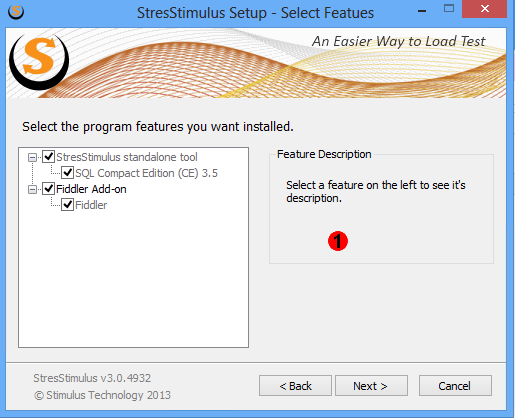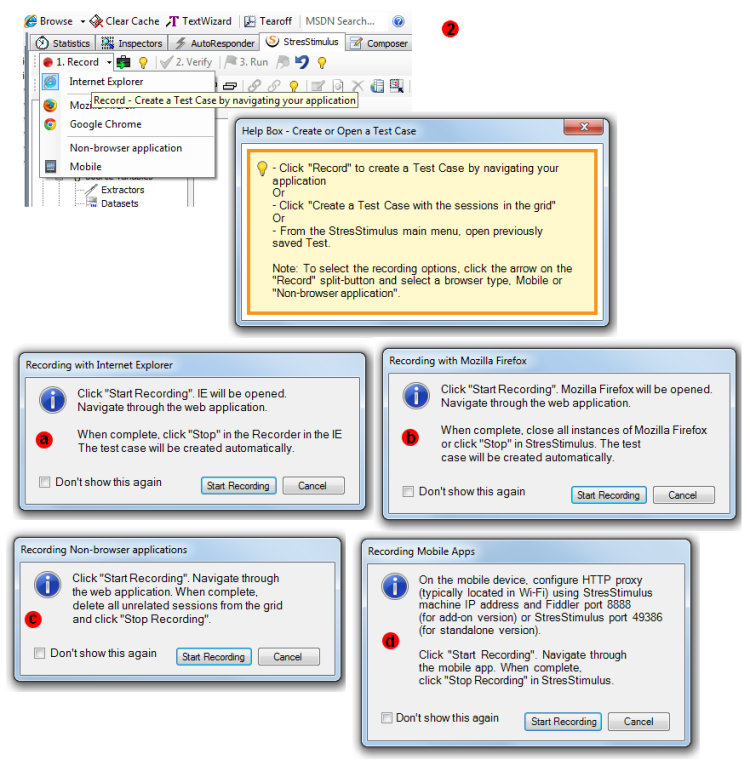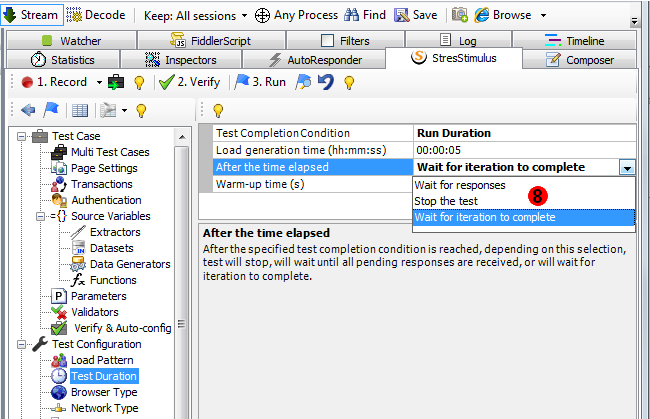Test configuration
1. Better installer: Reduced the download size by 40% to under 3 MB; installs only missing components, ensures reliable update and clean uninstall from the control panel or by running the uninstaller.

2. Multi browser / non-browser / mobile recording. In the previous versions, automatic recording was supported only in Internet Explorer. In the current version, the Recorder button is implemented as a split button that provides the following choices:

a. Internet Explorer: records a test case using IE with embedded Recorder. This is the easiest method of recording that includes automatic and selective browser cache clearing, the option to rename pages in the browser and filtering sessions.
b. Firefox, Chrome, Opera or Safari: records a test case from any installed web browser, filters sessions. Browser cache should be cleared manually. Pages can be renamed after creating a test case.
c. Non-browser application: records a test case from sessions capture from all processes. This option should be used for capturing user actions initiated by non-browser web client.
d. Mobile: records a test case from a mobile device, configured to use proxy. All mobile devices which allow you to set a proxy, such as an iPhone/iPad, Android, Windows phone or Blackberry are supported.
3. Smarter Parameter Finder. In the previous versions Parameter Finder only recommends query string parameters in GET requests. In 3.0, the Parameter Finder supports POST requests as well. It helps to quickly locate missing extractors and create necessary dynamic parameters. Additionally, the new parameter Finder substantially reduces the number of unnecessary parameters. If you are just starting with load testing, the Parameter Finder will help you configure the most sophisticated tests quickly and flawlessly like a Pro. If you are a seasoned QA professional, but just aren't familiar with the internal details of a specific web application, Parameter Finder will answer your questions about hidden dynamic parameters without necessarily talking to developers.
4. Smarter Auto-configurator. New Auto-configurator uses the new more accurate Parameter Finder engine to create all extractors and parameters in one sweep.
5. Bulk clone parameters by value. In the previous versions after creating a parameter, users could bulk clone it to automatically create the same parameterization rule in the subsequent requests where necessary. This bulk clone feature was based on parameter search by name. In 3.0, next to the "bulk clone by name" button, the "bulk clone by value" button is added. It searches parameters in the subsequent requests by value. This feature will be handy in applications that use different names for the same parameter.

6. More Verify options. In the previous versions, the Verify operation always ran in the context of the 1st VU. It was not possible to verify how the test will run with a different VU. If a test case uses a dataset to parameterize web form authentication, then you can verify the test case with different user credentials. In 3.0, you can specify which VU to emulate during the Verify operation by entering VU in the text box next to the Verify button. This allows debugging the test with different VUs and allows emulating different dataset entry (when using VU_ bound data-binding).

Test execution
7. Runtime Dashboard. The progress monitor is replaced by the more robust Runtime Dashboard that includes the following tabs:
a. Test tab of the dashboard displays instant values of several parameters indicating test progress.
b. Agent tab shows a breakdown of some of these parameters between agents.
c. Test Case tab further breaks down these parameters between test cases executed on each agent (coming soon).

8. More test duration options. In the Test Duration section, when the user sets a Test Completion Condition property to "Run Duration" or "Reaching Max VUs", the "After test elapsed" property now has one additional option, "Wait to Complete Iterations". When this option is selected, the test will run a little longer to complete all started iterations. As a result, because all iterations complete, StresStimulus will accurately calculate iteration specific parameters such as Avg. iteration time (s).

9. After the warm-up period is over, the same set of users will be used for the actual test. All requests, pages, transactions, iterations initiated during the warm-up time, are excluded from the metrics collection, once the actual test is started. This feature was discussed in this post.
10. Auto- splitting datasets between agents. In the previous versions in distributed tests, when records from a single dataset must be consumed by multiple agent machines, the user needed to manually split the records from the .csv file between multiple agents as described in this post. In 3.0, when VU-bound or random data-binding method is used to parameterize requests with datasets, StresStimulus automatically breaks down records between the agents, so no manual steps are required.
11. In the summary report all time related numbers now have 3 decimals to provide accuracy up to a millisecond.
To navigate to other parts of the v3.0 release notes, click the links below:
StresStimulus 3.0 beta is available here.